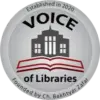What is a main class in classification system?درجہ بندی کے نظام میں ایک اہم کلاس کیا ہے؟
In a library classification system, a main class is a broad category that is used to group together books and other materials that have similar subject matter or content. These main classes are usually organized according to a hierarchical system, with the main classes at the top and more specific subclasses below them.
For example, in the Dewey Decimal Classification system, which is a commonly used library classification system, the main classes are organized into 10 broad categories:
- Philosophy and psychology
- Religion
- Social sciences
- Language
- Pure science
- Technology
- Arts and recreation
- Literature
- History and geography
- Miscellaneous
Within each main class, there are further subclasses and categories that are used to organize the materials in more detail. For example, within the main class “Pure science,” there are subclasses for specific scientific disciplines such as mathematics, physics, and biology.
In general, the main class in a library classification system is used to group together materials that share similar content or subject matter, and it provides a framework for organizing and accessing the materials within the library.
What is a main class in classification system?درجہ بندی کے نظام میں ایک اہم کلاس کیا ہے؟ Read More »
